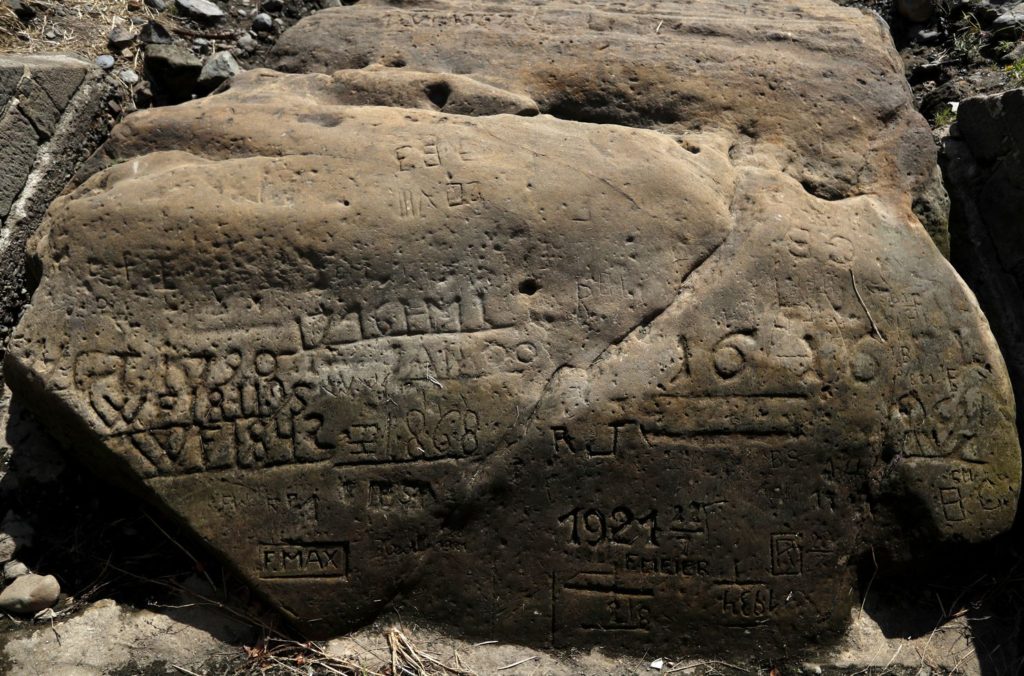
It’s a reminder that humanity lives under the constant threat of tragedy, but tragedy is also an opportunity for the best of our natures.
‘Hunger Stones’ are emerging across Europe.
The idea is that for centuries people have been watching rivers rise and fall with the seasons. And there would be certain stones in the river beds that would only emerge during the most severe droughts.
People started marking these stones as a warning to future generations.
As one stone in the Czech Republic dating back to 1616 says, “When you see me, weep.”
And now, with Europe in the grip of a drought as well, the stones are becoming visible again.
From the Smithsonian Mag:
More than a dozen of the stones have been found in and near the town of Decin, which is crossed by the Elbe River. Due to scorching temperatures, the water in the river has dropped, revealing boulders that were once used to record low water levels. The rocks are etched with dates, and the earliest one currently visible is 1616.
But hunger stones did more than simply document drought: They also lamented difficult conditions and let people know that trouble was afoot. One of the rocks, for instance, expressed that drought had brought a bad harvest, lack of food, high prices and hunger for poor people….
I don’t know why I find the idea of hunger stones so captivating.
Partly it’s because it points to a universal human experience. I grew up in Queensland cattle country. I know about drought. And droughts are ravaging huge swathes of Australia right now.
So I feel a connection with the European people of 1616, and then all the way back through time to before we settled and started cultivating crops. We have always been at the mercy of the elements, and we all know the heartbreak of drought. The hunger stones are a reminder of this.
It also feels like a warning from our ancestors against the folly and hubris of the 21st century.
I mean, how much of our economy actually does anything? We have all these fancy financial products and derivatives and then derivatives of derivatives.
But at the end of the day, all of this is built on our ability to meet our basic needs. There’s no covered FX swaps if there’s no bread.
And so the hunger stones remind me that we can’t take the good times for granted. Our needs are fairly simple, but they’re still needs. I dream of a world where our economy reflects that.
(I dream of a world where farmers get paid as much as bankers!)
And finally, to me it feels like the hunger stones are an act of care – an act of care that reaches out through time to people you will never meet.
When they said, “When you see me, weep”, I don’t think that was meant to be in any way vindictive. It’s not “Ha! Suck it, future generations! You’re stuffed now.”
I think it’s meant as a warning. If you see this stone, then tragedy is close. Get prepared. Do what you can to take care of your loved ones.
They didn’t have to do that. They could have just said, well if there’s a drought tomorrow, it’s someone else’s problem.
But they didn’t. They left their etchings there as a warning to people they would never meet.
I think this is one of the most beautiful expressions of the human spirit. That care for total strangers.
And so it’s this mix in the hunger stones – the human care written on a reminder of constant tragedy – that makes them so evocative.
Poetic, even.